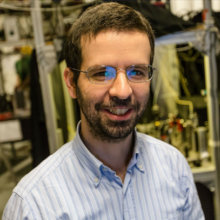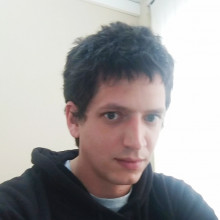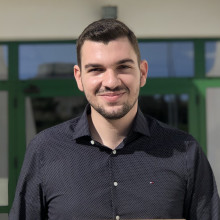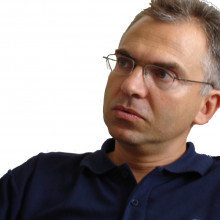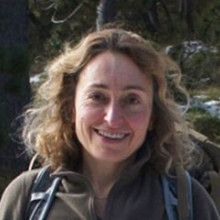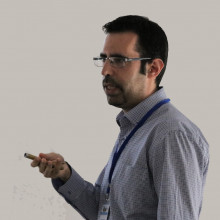Position Description
- Διεξαγωγή πειραματικών μετρήσεων σύμφωνα με τις απαιτήσεις του έργου (π.χ. φασματοσκοπικές μελέτες δειγμάτων προϊόντων αγροδιατροφής και συναφών χημικών ουσιών, σχεδιασμός πειραματικών διατάξεων, κ.α.)
- Ανάλυση πειραματικών αποτελεσμάτων (π.χ. με χρήση υφιστάμενου λογισμικού στατιστικής επεξεργασίας δεδομένων)
- Διάχυση των αποτελεσμάτων του έργου (π.χ. μέσω δημοσιεύσεων σε επιστημονικά περιοδικά, παρουσιάσεων σε συνέδρια, αναρτήσεων σε κοινωνικά δίκτυα ή στην ιστοσελίδα του έργου, κ.α.)
- Συμμετοχή στη διαχείριση του έργου και τη σύνταξη εκθέσεων προόδου
- Συμμετοχή σε συναντήσεις με τα μέλη του εργαστηρίου και με εξωτερικούς συνεργάτες
Για το πλήρες κείμενο της πρόσκλησης ακολουθήστε τον σύνδεσμο 'Related Documents'
Required Qualifications
- Πτυχίο Θετικών Επιστημών (Φυσικής, Χημείας, Επιστήμης Υλικών)
- Φοιτητής/φοιτήτρια τουλάχιστον δευτέρου εξαμήνου σε Μεταπτυχιακό Πρόγραμμα (MSc) σε Ανώτατο Εκπαιδευτικό Ίδρυμα της ημεδαπής (σε Φυσική, Χημεία, Επιστήμη Υλικών) συναφές με το αντικείμενο του έργου
- Γνώση φασματοσκοπικών τεχνικών απορρόφησης και φθορισμού
- Γνώση και τεκμηριωμένη εμπειρία στην ανάλυση προϊόντων αγροδιατροφής
Application Procedure
Στο φάκελο υποβολής της πρότασης θα πρέπει να εμπεριέχονται τα ακόλουθα:
- Αίτηση (Form Greek στην αριστερή στήλη) με αναφορά στον κωδικό της θέσης και στο όνομα του προγράμματος
- Αναλυτικό Βιογραφικό Σημείωμα
- Ευκρινή φωτοαντίγραφα τίτλων σπουδών
- Πρόσφατη βεβαίωση σπουδών μεταπτυχιακού φοιτητή
ΥΠΟΒΟΛΗ ΠΡΟΤΑΣΕΩΝ
Οι ενδιαφερόμενοι καλούνται να υποβάλουν τις αιτήσεις τους και όλα τα απαραίτητα δικαιολογητικά, ηλεκτρονικά στη διεύθυνση hr@iesl.forth.gr με κοινοποίηση (cc): στον Δρ Μ. Βελεγράκη (vele@iesl.forth.gr). Οι αιτήσεις θα πρέπει να αποσταλούν με την ένδειξη: «Αίτηση στο πλαίσιο του προγράμματος ΦΩΤΟΜΕΛΟ, της πρόσκλησης εκδήλωσης ενδιαφέροντος με Α.Π. … και κωδικό θέσης … » (όπως αυτός αναφέρεται στον Πίνακα του Παραρτήματος).
Appointment Duration
12 μήνεςPosition Description
The successful applicant will work to construct our third BEC experiment. He/She should have experience in optics, optical analysis and surface physics. We expect her/him to have finished his/her master or be about to finish.
For the full announcement, follow the link "Related Documents"
Related Project
NANOLACE -Required Qualifications
- Good Grades in Undergraduate Degree
- Good Grades in Master Degree
- Research Experiments in Quantum Physics
Desirable Qualifications
- Graduate Level Courses in Programming, Electronics, Computational Physics and Quantum Mechanics
- Computing experience (MatLab, C, Latex, Python...)
- Participation in internships
Application Procedure
Interested candidates who meet the aforementioned requirements are kindly asked to submit their applicationswith cc to the Scientific Coordinator Dr Wolf von Klitzing (wvk@iesl.forth.gr).
In order to be considered, the application must include:
- Application Form (Form Greek or Form English to the left)
- Brief CV
- Scanned copies of academic titles
Appointment Duration
12 monthsFunding

The PACE-IN collaborative project gathers six research groups in Europe (France, Austria, Greece, Israel, Italy, Czech Republic) funded by their own respective national agencies but selected at the European level in the framework of the QUANTERA program.
Functional devices for quantum information processing and communication must make use of appropriate matter-light interfaces. Their key role in bringing quantum devices towards practical applications is essential. Hence, building the conceptual and technological base for such interfaces will pave the way for the scalable quantum computation and quantum Internet. The overall objective of this proposal is to meet the critical challenge of studying, implementing and optimizing ground-breaking, dynamically-controlled interfaces between matter and light.
Photons can efficiently and durably transmit quantum information over large distances; cold, trapped ions can be manipulated to enable high-fidelity quantum information processing, while atomic ensembles are particularly suited for long-lived quantum memories, as well as nonlinear generation of non-classical correlations between optical beams. The aim of PACE-IN project is the development of reliable quantum interfaces between atomic systems and photons. We shall develop and demonstrate massive parallel processing, storage and transmission of quantum information by hitherto unexploited collective, multimode quantum states or atomic ensembles and ionic crystals, and design methods to characterize the entanglement and non-classicality of quantum states transferred from atoms and ions to photons.
Efficient interfacing mechanisms between “stationary” atomic qubits or ensembles and “flying” (photonic) quantum variables, whether discrete or continuous, must be robust and dynamically controllable to allow the best possible exploitation of their respective functionalities while maintaining the highest possible overall fidelity/coherence and speed. The scientific and technological challenge that will be addressed in this project is the conceptually and experimentally optimized quantum information processing and manipulation at interfaces for the successful implementation of scalable quantum technologies in combination with long distance quantum communication.
Funding

Position Description
Quantum memories for photons
For the full announcement, follow the link "Related Documents"
Required Qualifications
- Graduate degree in Physics, Optics, Electrical engineering or similar
- Excellent knowledge of English
Desirable Qualifications
- Good knowledge of quantum theory and fundamentals of quantum information
- Research experience in relevant disciplines
- Knowledge of, and experience with, scientific programming
Application Procedure
Interested candidates who meet the aforementioned requirements are kindly asked to submit their applications to the address (hr@iesl.forth.gr), with cc to Dr David Petrosyan (dap@iesl.forth.gr).
In order to be considered, the application must include:
- Application Form (Form Greek or Form English to the left)
- Brief CV
- Scanned copies of academic titles
- University department certificate for enrollment in a master’s program
Appointment Duration
4 monthsPosition Description
Development of nonlinear rheometric protocols for measurements of transient and steady shear properties of entangled polymers and nanocomposites. Advanced analysis, comparison with modeling and complementary structural and thermal measurements.
For the full announcement, follow the link "Related Documents"
Required Qualifications
- PhD in chemical engineering or materials science
- Experimental experience with polymer characterization (thermal, structural)
- Experience with rheometry
- Knowledge of polymer rheology
- Knowledge of English, presentation-writing skills
Application Procedure
Interested candidates who meet the aforementioned requirements are kindly asked to submit their applications to the address (hr@iesl.forth.gr), with cc to Prof. D. Vlassopoulos (dvlasso@iesl.forth.gr).
In order to be considered, the application must include:
- Application Form (Form Greek or Form English to the left)
- Brief CV
- Scanned copies of academic titles
Appointment Duration
8 monthsPosition Description
Master student
Investigation of rheological behavior in relation with the micro-structure and dynamics in colloidal glasses and gels. The experimental techniques of choice include rheology, optical microscopy and light scattering.
PhD student
Rheology of Colloidal systems with emphasis on out-of-equilibrium states such as glasses and gels. Investigation of rheological behavior and the underlying structural changes and dynamics in colloidal glasses and gels. A combination of experimental techniques involving linear and nonlinear rheology, optical microscopy and light scattering will be complemented with computer simulations. Phenomena such as the interplay of thermodynamic phases and out-of-equilibrium states and the effects external fields have on the above will be studied. Model systems of varying particle shape and interactions will be explored in parallel with simplified industrial formulations for specific applications. The candidate will work in an interdisciplinary field in a challenging multinational environment and will have the opportunity to collaborate with world leading labs in Europe and the US.
Required Qualifications
Master student
- Degree in Physics, Chemical Engineering, Material Science or related field
- Experimental experience in soft matter and related techniques
- Background knowledge in Soft Matter Science
- Good knowledge of English
PhD student
- Degree in Physics, Chemical Engineering, Material Science or related field
- Master’s degree (MsC) in related field
- Experimental experience in rheology, optical microscopy or light scattering
- Knowledge of Soft Matter Physics
- Good knowledge of English
- Experience in computer simulations and data analysis
Desirable Qualifications
Experience in programming and data analysis
Application Procedure
Interested candidates who meet the aforementioned requirements are kindly asked to submit their applications to the address (hr@iesl.forth.gr), with cc to Prof. G. Petekidis (georgp@iesl.forth.gr).
In order to be considered, the application must include:
- Application Form (please download file from the link to the left)
- Brief CV
- Scanned copies of academic titles
- Certificate for enrolment in a master’s or PhD program
Appointment Duration
11 monthsPosition Description
Πολυμερικά/Πιεζοηλεκτρικά υλικά: ανάπτυξη και αξιολόγηση
Για το πλήρες κείμενο της πρόσκλησης ακολουθήστε τον σύνδεσμο 'Related Documents'
Required Qualifications
- Πτυχίο Φυσικής ή Επιστήμης και Τεχνολογίας Υλικών ή Μηχανικού
- Μεταπτυχιακός Τίτλος σε Φυσικές, Μηχανικές ή Τεχνολογικές Επιστήμες
- Αποδεδειγμένη εμπειρία σε ανάπτυξη πιεζοηλεκτρικών αισθητήρων
- Αποδεδειγμένη εμπειρία σε μελέτη και χαρακτηρισμό πολυμερικών υλικών
- Γνώσεις 3D CAD και σχεδιασμού διατάξεων
- Άριστη γνώση αγγλικών
- Εμπειρία σε 3D εκτύπωση
Application Procedure
Στο φάκελο υποβολής της πρότασης θα πρέπει να εμπεριέχονται τα ακόλουθα:
- Αίτηση με αναφορά στον κωδικό της θέσης και στο όνομα του προγράμματος
- Αναλυτικό Βιογραφικό Σημείωμα
- Ευκρινή φωτοαντίγραφα τίτλων σπουδών
ΥΠΟΒΟΛΗ ΠΡΟΤΑΣΕΩΝ
Οι ενδιαφερόμενοι καλούνται να υποβάλουν τις αιτήσεις τους και όλα τα απαραίτητα δικαιολογητικά, ηλεκτρονικά στη διεύθυνση hr@iesl.forth.gr με κοινοποίηση (cc): στον Δρ Αλ. Πανταζή (alepa@physics.uoc.gr). Οι αιτήσεις θα πρέπει να αποσταλούν με την ένδειξη: «Αίτηση στο πλαίσιο του προγράμματος Smart Insole, της πρόσκλησης εκδήλωσης ενδιαφέροντος με Α.Π. … και κωδικό θέσης … » (όπως αυτός αναφέρεται στον Πίνακα του Παραρτήματος).
Appointment Duration
6 μήνεςSpArch «Φασματοχημική Ανάλυση Αρχαιολογικών Βιο-οργανικών Καταλοίπων»
HFRI-FM17-ΤΔΕ-3542
«1Η ΠΡΟΚΗΡΥΞΗ ΕΡΕΥΝΗΤΙΚΩΝ ΕΡΓΩΝ ΕΛ.ΙΔ.Ε.Κ. ΓΙΑ ΤΗΝ ΕΝΙΣΧΥΣΗ ΤΩΝ ΜΕΛΩΝ ΔΕΠ ΚΑΙ ΕΡΕΥΝΗΤΩΝ/ΤΡΙΩΝ ΚΑΙ ΤΗΝ ΠΡΟΜΗΘΕΙΑ ΕΡΕΥΝΗΤΙΚΟΥ ΕΞΟΠΛΙΣΜΟΥ ΜΕΓΑΛΗΣ ΑΞΙΑΣ»
The main objective of the proposed research (SpArch) is the development of a viable and efficient analytical methodology based on modern spectroscopic techniques that will enable molecular characterization and analysis of bioorganic residues on/in archaeological objects with the purpose to aid archaeological scientific research.
More specifically, our research will focus on integrating a versatile methodology that will enable rapid and efficient screening and characterization of residue materials as they are found in the context of archaeological investigations, based on the combined use of:
a) 2D-fluorescence spectroscopy (excitation-emission) coupled to chemometrics tools, for the classification of various types of organic and bio-organic archaeological residues;
b) Raman microscopy, exploiting, in particular, the surface enhancement effect offered by special metallic nanostructured substrates (SERS: surface-enhanced Raman spectroscopy), for the highly sensitive analysis of organic and bio-organic archaeological residues and identification of biomarkers;
c) novel NMR (nuclear magnetic resonance spectroscopy) methodologies, including 1-D and 2-D schemes, for the classification of various types of organic and bio-organic archaeological residues and identification of biomarkers in complex organic residues.
This research is expected to bridge the gap between, on the one hand, the empirical macroscopic characterization of residues, based primarily on archaeological context and visual criteria, and on the other hand, state-of-the-art methods, relying on powerful, yet time- and effort-demanding, chromatographic and mass spectrometric techniques. The proposed methodology, relying on spectrochemical tools, shall be able to handle large numbers of samples in relatively short times and enable researchers to assess the presence of certain classes of materials, e.g. oils, waxes, resins, proteins, sugars or dyes, and possibly identify distinct molecular biomarkers, thus permitting informed decisions to be made concerning the type of residue materials encountered and the selection of a subsequent high-end method for further detailed analysis.
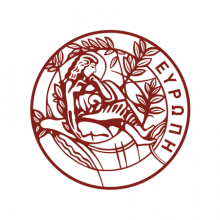
Funding

Position Description
ΘΕΣΗ 13γ
Στο πλαίσιο του παρόντος έργου ο υποψήφιος θα ασχοληθεί με τον σχεδιασμο και την κατασκευή πλεγματων διαφόρων γεωμετριών για την αλληλεπίδραση πολαριτονικών συμπυκνωμάτων με οπτικη αποτύπωση του πλέγματος δυναμικού. O υποψήφιος καλείται επισης να χαρακτηρίσει πολαριτονικές ετερεδομές μέσω φασματοσκοπικών τεχνικών (microphotoluminescence imaging techniques). Τέλος ο υποψήφιος καλείται να πραγματοποιήσει συνδυαστικά πειράματα οπτικού χαρακτηρισμού με streak camera με σκοπό να ερευνήσει τις αλληλεπιδράσεις μεταξύ συμπυκνωμάτων στα πλέγματα συναρτήσει του χρόνου.
ΘΕΣΗ 13δ
O υποψήφιος θα ασχοληθεί με τον οπτικό χαρακτηρισμό πολαριτονικών ετεροδομών μέσω φασματοσκοπικών τεχνικών με σκοπό τη μελέτη της ενίσχυση της αλληλεπίδρασης των πολαριτονικών συμπυκνωμάτων.
Για το πλήρες κείμενο της πρόσκλησης ακολουθήστε τον σύνδεσμο 'Related Documents'
Required Qualifications
ΘΕΣΗ 13γ
- Πτυχίο σε φυσικές επιστήμες ή πτυχίο μηχανικού
- Μεταπτυχιακό δίπλωμα στις φυσικές επιστήμες ή μηχανικού
- Ερευνητική εμπειρία σε απεικόνιση πλεγμάτων με διάταξη Digital Light Processing (DLP)
- Ερευνητική εμπειρία σε οπτικό χαρακτηρισμό και μετρήσεις με streak camera
- Ερευνητική εμπειρία σε πολαριτονικές δομές και συσκευές
ΘΕΣΗ 13δ
- Πτυχίο στη φυσική
- Μεταπτυχιακό δίπλωμα στη φυσική
- Ερευνητική εμπειρία σε συστήματα υψηλού κενού
- Ερευνητική εμπειρία σε οπτικές διατάξεις
- Ερευνητική εμπειρία σε συστήματα fs-laser
Desirable Qualifications
ΘΕΣΗ 13γ
Ερευνητική εμπειρία σε αυτοματοποιημένες μετρήσεις
ΘΕΣΗ 13δ
- Γνώσεις αυτοματισμού σε προγραμματιστικό περιβάλλον (Labview)
- Άριστη γνώση αγγλικής γλώσσας
Application Procedure
Στο φάκελο υποβολής της πρότασης θα πρέπει να εμπεριέχονται τα ακόλουθα:
- Αίτηση (Form Greek στην αριστερή στήλη) με αναφορά στο πρόγραμμα και στον κωδικό της θέσης
- Αναλυτικό Βιογραφικό Σημείωμα
- Ευκρινή φωτοαντίγραφα τίτλων σπουδών
- Πρόσφατη βεβαίωση σπουδών υποψήφιου διδάκτορα
ΥΠΟΒΟΛΗ ΠΡΟΤΑΣΕΩΝ
Οι ενδιαφερόμενοι καλούνται να υποβάλουν τις αιτήσεις τους και όλα τα απαραίτητα δικαιολογητικά, ηλεκτρονικά στη διεύθυνση hr@iesl.forth.gr με κοινοποίηση (cc): στον Καθηγ. Π. Σαββίδη (psav@materials.uoc.gr). Οι αιτήσεις θα πρέπει να αποσταλούν με την ένδειξη: «Αίτηση στο πλαίσιο του προγράμματος ΑΕΝΑΟ, της πρόσκλησης εκδήλωσης ενδιαφέροντος με Α.Π. … και κωδικό θέσης … » (όπως αυτός αναφέρεται στον Πίνακα του Παραρτήματος).



